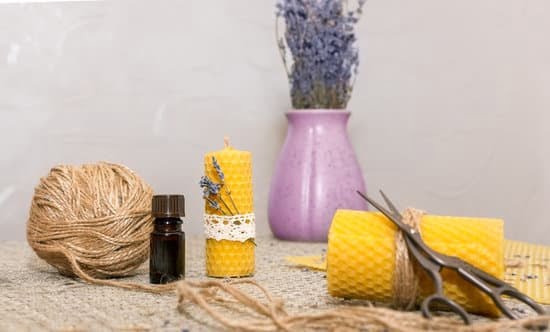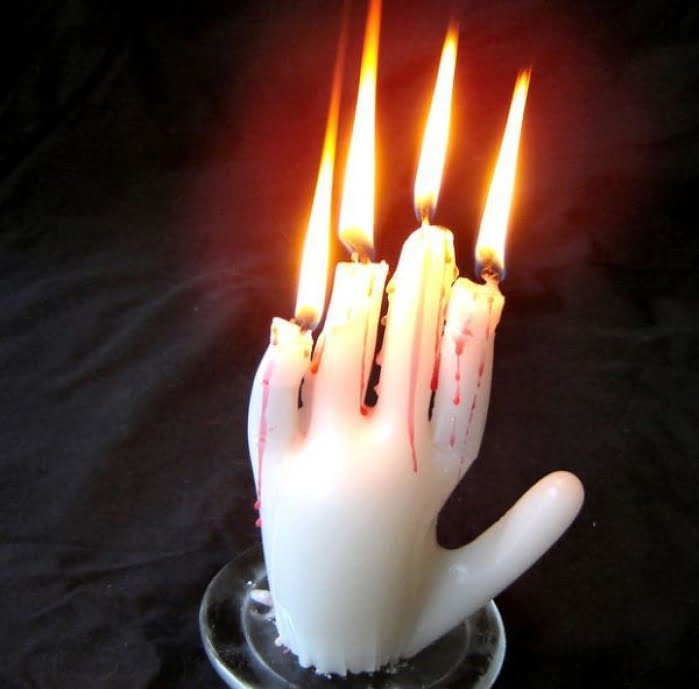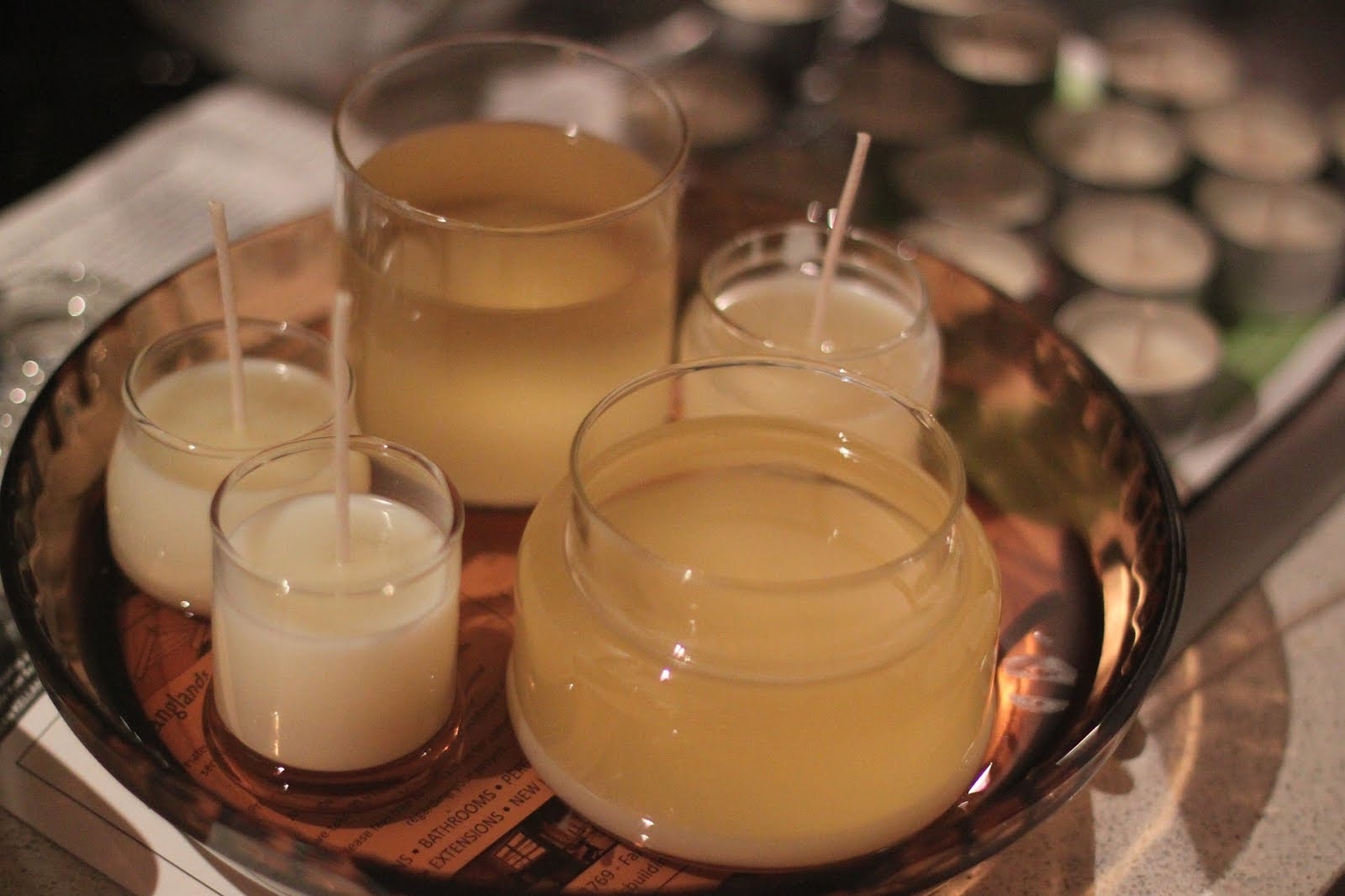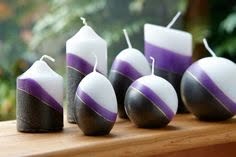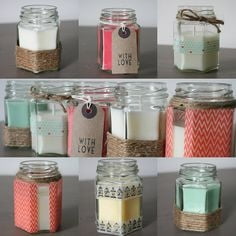Wooden wicks have been gaining popularity in the candle making industry for their unique aesthetic and enhanced burning performance. Candle enthusiasts are drawn to the crackling sound and rustic charm that wooden wicks provide, making them a staple choice for creating cozy and inviting atmospheres. However, one question often arises among beginners: do wooden wicks need to be soaked before making candles?
In this article, we will delve into the world of wooden wicks to understand their composition, benefits, and optimal burning techniques. In the first section, we will explore what wooden wicks are and why they have become a favored choice in candle making. Understanding the structure and composition of these wicks is crucial in comprehending their behavior when ignited.
Following that, we will discuss the importance of soaking wooden wicks before using them in candles. This step is vital for ensuring their optimal burning performance. We will provide a step-by-step guide on how to properly soak wooden wicks, including recommended soaking times and techniques.
So if you’re an aspiring candle maker or simply curious about enhancing your candle burning experience with wooden wick creations, read on as we uncover the truth behind soaking wooden wicks and discover the benefits it can bring to your homemade candle projects.
Understanding the structure and composition of wooden wicks
Wooden wicks are becoming increasingly popular in the world of candle making due to their unique aesthetic appeal and distinct crackling sound when lit. However, to fully understand the benefits of using wooden wicks, it is important to explore their structure and composition.
Wooden wicks are typically made from softwoods such as cedar, maple, or cherry. These woods are chosen for their ability to burn slowly and evenly, providing a consistent flame throughout the candle’s lifespan. The wood used in wooden wicks also contributes to the crackling sound that many people find soothing and reminiscent of a cozy fireplace.
In addition to the type of wood used, the composition of wooden wicks can vary depending on the manufacturer. Some wooden wicks are made solely from wood, while others may have a thin layer of natural cotton surrounding the wooden core. This cotton layer helps with initial lighting and improves overall combustion by acting as a secondary fuel source.
To further enhance the performance of wooden wicks, some manufacturers treat them with various substances such as natural oils or wax coatings. These treatments not only make the wick easier to light but also help regulate its burn rate, ensuring a consistent flame height throughout the candle’s life.
Understanding the structure and composition of wooden wicks allows candle makers to make informed choices when selecting wicks for their creations. By choosing high-quality wooden wicks made from suitable materials and treated properly, candle makers can ensure optimal burning performance and achieve superior results in their finished products.
| Material | Composition | Treatments |
|---|---|---|
| Cedar | 100% wood | Natural oil treatment |
| Maple | Wood core with cotton layer | Wax coating |
| Cherry | 100% wood | Natural oil and wax treatment |
The importance of soaking wooden wicks
Enhanced Flame Stability
One of the primary reasons why soaking wooden wicks before making candles is crucial is because it helps in achieving enhanced flame stability. When wooden wicks are soaked, the fibers within the wick absorb enough wax to ignite and burn evenly throughout the entire length of the wick.
This ensures a consistent flame height and prevents any potential flickering or uneven burning. By providing a stable and reliable flame, soaked wooden wicks contribute to an aesthetically pleasing and long-lasting candle experience.
Reduced Smoking
Another important benefit of soaking wooden wicks is the reduction in smoking during candle burning. Unsoaked wooden wicks have a higher chance of producing excess smoke due to incomplete combustion and insufficient fuel absorption. However, when wooden wicks are properly soaked, they are able to efficiently draw up enough wax to sustain a clean burn. This reduces the amount of smoke emitted during the candle’s lifespan, creating a more enjoyable and healthier environment for candle enthusiasts.
Enhanced Scent Diffusion
Soaking wooden wicks also plays a vital role in enhancing scent diffusion while the candle is lit. The process of soaking ensures that each individual fiber within the wick is saturated with wax, allowing for optimal fragrance release when ignited.
As the flame burns through the soaked wood and melts the surrounding wax, it carries the fragrance oils upward, intensifying their dispersion into the surrounding space. This leads to a more potent and noticeable scent throw, making scented candles with soaked wooden wicks highly desirable for those seeking an aromatic ambiance.
Step-by-step guide on soaking wooden wicks
Soaking wooden wicks before making candles is a crucial step that ensures optimal burning performance. By soaking the wicks, you are allowing them to absorb enough candle wax, which in turn promotes a steady and even burn. This section will provide a step-by-step guide on how to properly soak wooden wicks, including recommended soaking times and techniques.
- Choose the right container: Start by selecting a container that is spacious enough to accommodate all the wooden wicks you plan on soaking. Ensure that it is clean and free from any debris or contaminants.
- Prepare the wax: Melt your candle wax according to your chosen recipe or manufacturer’s instructions. For best results, use a type of wax that has a low melting point and is compatible with wooden wicks.
- Submerge the wicks: Once your wax has melted, carefully place the wooden wicks into the container one by one, ensuring they are fully submerged in the liquid wax. It is important to make sure each wick has enough space to freely absorb the wax.
- Soak for the recommended time: The length of time required for soaking wooden wicks can vary depending on their thickness and material composition. As a general guideline, it is recommended to soak them for at least 30 minutes or up to 24 hours for thicker wicks.
- Remove and dry the wicks: After the recommended soaking time has elapsed, gently lift the soaked wicks out of the container using tweezers or tongs. Allow them to drip off any excess wax back into the container before transferring them onto a clean surface or non-stick parchment paper for drying.
- Let them dry completely: To ensure proper drying, place the soaked wooden wicks in a well-ventilated area away from any drafts or direct sunlight. Depending on environmental factors such as temperature and humidity levels, it may take anywhere from 12 hours to several days for the wicks to completely dry. Be patient and avoid handling them until they are fully dry to prevent any wax from transferring onto your hands.
By following these steps, you can ensure that your wooden wicks are properly soaked and prepared for use in your candle-making process. Remember to always refer to the specific instructions provided by your chosen wooden wick manufacturer for the best results. Taking the time to soak your wooden wicks will ultimately contribute to a more enjoyable and satisfying candle burning experience.
Benefits of pre-soaking wooden wicks
One of the key benefits of pre-soaking wooden wicks before making candles is improved flame stability. When wooden wicks are soaked, they absorb moisture and expand, which helps create a more consistent and controlled burn. This additional moisture within the wick allows for a slower and more even burning process, reducing the chances of the flame flickering or extinguishing prematurely.
Another advantage of soaking wooden wicks is reduced smoking during burning. Unsoaked wicks have a higher chance of smoking due to the release of volatile compounds when first ignited. By soaking the wicks beforehand, these volatile compounds are minimized, resulting in a cleaner burn with less smoke. This not only improves air quality but also eliminates the need for constant trimming and relighting.
In addition to flame stability and reduced smoking, pre-soaking wooden wicks can enhance scent diffusion in candles. The moisture absorbed by the wick during soaking helps in dispersing fragrance oils more effectively throughout the candle as it burns. The gradual release of fragrance from a properly soaked wick ensures a consistent and pleasant scent experience for longer periods of time.
To maximize these benefits, it is important to follow recommended soaking techniques and times for different types of wood used in wicks. Softwoods like cedar may only require a shorter soak time of 20-30 minutes, while hardwoods such as birch or cherry might benefit from soaking overnight or up to 24 hours.
Overall, pre-soaking wooden wicks before making candles offers significant advantages that contribute to an optimal burning experience. Improved flame stability, reduced smoking, and enhanced scent diffusion are just some of the reasons why many candle makers choose this technique for their creations. By taking the time to properly soak your wooden wicks, you can achieve candles that not only look beautiful but also provide a delightful ambiance and enjoyable fragrance throughout their lifespan.
Common misconceptions about wooden wicks and soaking
Wooden wicks have gained popularity in candle making due to their unique aesthetic appeal and ability to create a crackling sound reminiscent of a cozy fireplace. However, there are several misconceptions surrounding the need to soak wooden wicks before making candles. In this section, we will debunk some of these popular myths and provide clarification on the importance of soaking wooden wicks.
- Myth: Wooden wicks do not need to be soaked because they are already treated.
- Fact: While it is true that wooden wicks are often treated with a substance called “wick stiffener,” which helps in maintaining their shape during the manufacturing process, soaking is still necessary. Soaking prepares the wood fibers for optimal flame performance by allowing them to absorb moisture evenly throughout the entire length of the wick.
- Myth: Soaking wooden wicks can cause excessive smoking and soot.
- Fact: On the contrary, properly soaked wooden wicks actually reduce smoking and sooting. When a wooden wick is thoroughly soaked, it creates a controlled burn that minimizes smoke output. This allows for a cleaner and more enjoyable burning experience without compromising the fragrance throw of the candle.
- Myth: Soaking wooden wicks for too long will cause them to become soggy and ineffective.
- Fact: It is important to follow recommended soaking times provided by manufacturers or experienced candle makers. The soaking duration may vary depending on factors such as humidity levels and specific types of wooden wicks. Over-soaking can indeed make the wick too soft or waterlogged, affecting its performance. However, when done correctly, soaking enables consistent combustion by moisturizing and expanding the wood fibers within the wick.
Addressing these misconceptions will help candle makers understand the significance of soaking wooden wicks before making candles. It ensures optimal flame performance, reduces smoking and sooting, and enhances overall scent diffusion. By dispelling these myths, we can encourage individuals to embrace this technique for superior candle burning experiences.
| Myth | Fact |
|---|---|
| Wooden wicks do not need to be soaked because they are already treated. | While it is true that wooden wicks are often treated with a substance called “wick stiffener,” which helps in maintaining their shape during the manufacturing process, soaking is still necessary. Soaking prepares the wood fibers for optimal flame performance by allowing them to absorb moisture evenly throughout the entire length of the wick. |
| Soaking wooden wicks can cause excessive smoking and soot. | On the contrary, properly soaked wooden wicks actually reduce smoking and sooting. When a wooden wick is thoroughly soaked, it creates a controlled burn that minimizes smoke output. This allows for a cleaner and more enjoyable burning experience without compromising the fragrance throw of the candle. |
| Soaking wooden wicks for too long will cause them to become soggy and ineffective. | It is important to follow recommended soaking times provided by manufacturers or experienced candle makers. The soaking duration may vary depending on factors such as humidity levels and specific types of wooden wicks. Over-soaking can indeed make the wick too soft or waterlogged, affecting its performance. However, when done correctly, soaking enables consistent combustion by moisturizing and expanding the wood fibers within the wick. |
Troubleshooting tips when using wooden wicks
Insufficient Flame Height
One common issue that candle makers may encounter when working with wooden wicks is an insufficient flame height. If the flame is too low, it can result in a weak scent throw and poor burning performance. To address this problem, there are a few possible solutions.
First, ensure that the wick is properly trimmed to the recommended length before lighting the candle. Trimming the wick to about ¼ inch can help promote a higher flame height. Additionally, try using a larger diameter wick to increase the flame size and intensity.
If adjusting the wick size does not solve the issue, consider checking the wax temperature during the pouring process. If the wax is poured at too low of a temperature, it can affect how the wooden wick burns and lead to a smaller flame. Experimenting with different pouring temperatures within the recommended range can often resolve this problem.
Excessive Smoking
Excessive smoking from wooden wicks can be another challenge faced by candle makers. This can be caused by various factors such as using wet or unseasoned wood for making wicks, allowing excess debris or dust to accumulate on the surface of the wick, or improper initial burning techniques.
To minimize smoking issues, ensure that you use properly seasoned wooden wicks that have been dried thoroughly before use. Avoid using freshly cut wooden materials as they tend to still retain moisture that could contribute to excessive smoking.
Another solution is to gently blow out any excess debris or ash on top of the wick before each lighting session. This helps to keep the burning surface clean and prevents unnecessary smoke from being produced.
It’s also important to follow proper initial burning techniques when first lighting a candle with a wooden wick. Allow your candle to burn for at least two hours during its initial burn to establish an even wax pool and prevent any residue build-up on the wick, which can contribute to smoking issues.
Uneven Burning
Uneven burning is a frequent concern when working with wooden wicks, as it can lead to an uneven wax pool and tunneling. There are several techniques that can help address this issue.
To promote more even burning, ensure that your candle container has a wide enough diameter in relation to the size of your wooden wick. A wider container allows for better oxygen flow to the flame and helps prevent tunneling.
Additionally, make sure that you trim your wooden wick properly before each burn session. Trimming the wick to approximately ¼ inch allows for a controlled flame and helps prevent mushrooming, which can cause uneven burning.
Lastly, avoid using drafty areas or placing candles near open windows or vents, as this can create uneven air circulation around the flame and result in uneven burning patterns. Keep your candles in a draft-free environment for optimal performance.
Expert recommendations for using wooden wicks
When it comes to using wooden wicks in candle making, there are expert recommendations that can help ensure optimal performance. Experienced candle makers and professionals have shared their insights and advice on the best practices for working with wooden wicks, including the importance of soaking techniques.
One common recommendation from experts is to always soak your wooden wicks before using them in candles. Soaking helps to remove any impurities or chemicals that may be present in the wood, ensuring a cleaner burn and preventing unwanted odors or smoking. According to experienced candle makers, soaking also helps improve the stability of the flame and promotes even burning throughout the life of the candle.
To properly soak wooden wicks, there are specific techniques recommended by experts. First, it is important to use a non-toxic solution such as distilled water or a fragrance oil diluted with water. Avoid using any chemicals or substances that may leave a residue on the wick. The length of time for soaking can vary depending on the manufacturer’s instructions, but typically ranges from 30 minutes to overnight.
Additionally, some experts recommend pre-soaking longer than necessary and allowing excess moisture to evaporate before using the wick in a candle. This ensures that the wood absorbs an adequate amount of liquid without becoming too saturated, which can result in problems during burning such as excessive smoking or swelling.
By following these expert recommendations for soaking wooden wicks, you can enhance your candle-making experience and achieve superior burning performance. Remember to always consult with manufacturers’ guidelines specific to your chosen brand of wooden wicks for additional tips and techniques.
Conclusion
In conclusion, soaking wooden wicks before making candles is a crucial step that should not be overlooked. By understanding the structure and composition of wooden wicks, we can appreciate why soaking them is necessary for optimal burning performance.
Soaking wooden wicks provides several benefits that enhance the overall candle experience. Improved flame stability ensures a consistent burn throughout the candle’s life, reducing the risk of flickering or extinguishing prematurely. Additionally, pre-soaked wooden wicks produce less smoke, creating a cleaner and healthier environment for candle enjoyment. The enhanced scent diffusion achieved through proper soaking allows for a more impactful fragrance release, filling the room with a delightful aroma.
While there may be misconceptions surrounding the need to soak wooden wicks, it is important to debunk these myths and recognize that soaking is an essential step in achieving superior candle burning experiences. By following expert recommendations and troubleshooting tips, individuals can ensure their wooden-wicked candles burn smoothly and efficiently.
Frequently Asked Questions
Do you have to soak wood wicks before making candles?
Soaking wood wicks before making candles is not a requirement, but it is recommended for optimal performance. By soaking the wicks, you can ensure that they are thoroughly saturated with wax, which helps them ignite and burn evenly.
Soaking also helps to reduce the risk of tunneling, where the candle burns down the center and leaves unused wax along the sides. To soak wood wicks, simply place them in melted wax for at least 30 minutes to allow them to absorb the wax fully.
Do wood wicks need to be soaked in oil?
Wood wicks do not necessarily need to be soaked in oil. In fact, soaking them in oil can create issues with burning efficiently and may cause excess smoke or uneven burn.
Wood wicks are typically designed to be used with soy or beeswax candles and work best when soaked in melted wax rather than oil. The wax coating on the wood wick encourages a stable flame and provides better control over burning time and performance.
How do you prepare wooden candle wicks?
To prepare wooden candle wicks for use, it is essential to trim them to an appropriate length before inserting them into the candle container. The length of the wick should be determined by the size of your candle; too short may result in poor ignition, while too long can lead to excessive smoking or overheating.
It is generally recommended to trim wood wicks to around 1/8 – 1/4 inch above the surface of the melted wax once set. Additionally, if you choose not to soak your wood wick beforehand, it’s crucial to prime it before lighting by applying a small amount of melted wax onto the exposed portion of the wick to encourage easier ignition once lit.

Welcome to my candle making blog! In this blog, I will be sharing my tips and tricks for making candles. I will also be sharing some of my favorite recipes.

